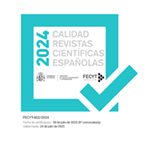The digital transformation of public television. Case study of RTVE, Rai and RTP
Abstract
Public television must use communication to contribute to the development of the democratic values of countries. This public service has been strongly conditioned by social, technological and economic changes. Digitalization has developed a new scenario where public television must find formulas to continue its essential mission. This article focuses on the national public television stations of Spain, Italy and Portugal. What have RTVE, Rai and RTP done to adapt to digital reality in the last decade, especially in the last three years? To understand this adaptation, and if it is aligned with the axes of the European Digital Strategy, a mostly qualitative approach is used that combines indirect observation of the television websites and mobile applications with analysis of the documents that the public corporations themselves make available through their transparency channel.
Downloads
Article download
License
In order to support the global exchange of knowledge, the journal Estudios sobre el Mensaje Periodístico is allowing unrestricted access to its content as from its publication in this electronic edition, and as such it is an open-access journal. The originals published in this journal are the property of the Complutense University of Madrid and any reproduction thereof in full or in part must cite the source. All content is distributed under a Creative Commons Attribution 4.0 use and distribution licence (CC BY 4.0). This circumstance must be expressly stated in these terms where necessary. You can view the summary and the complete legal text of the licence.










